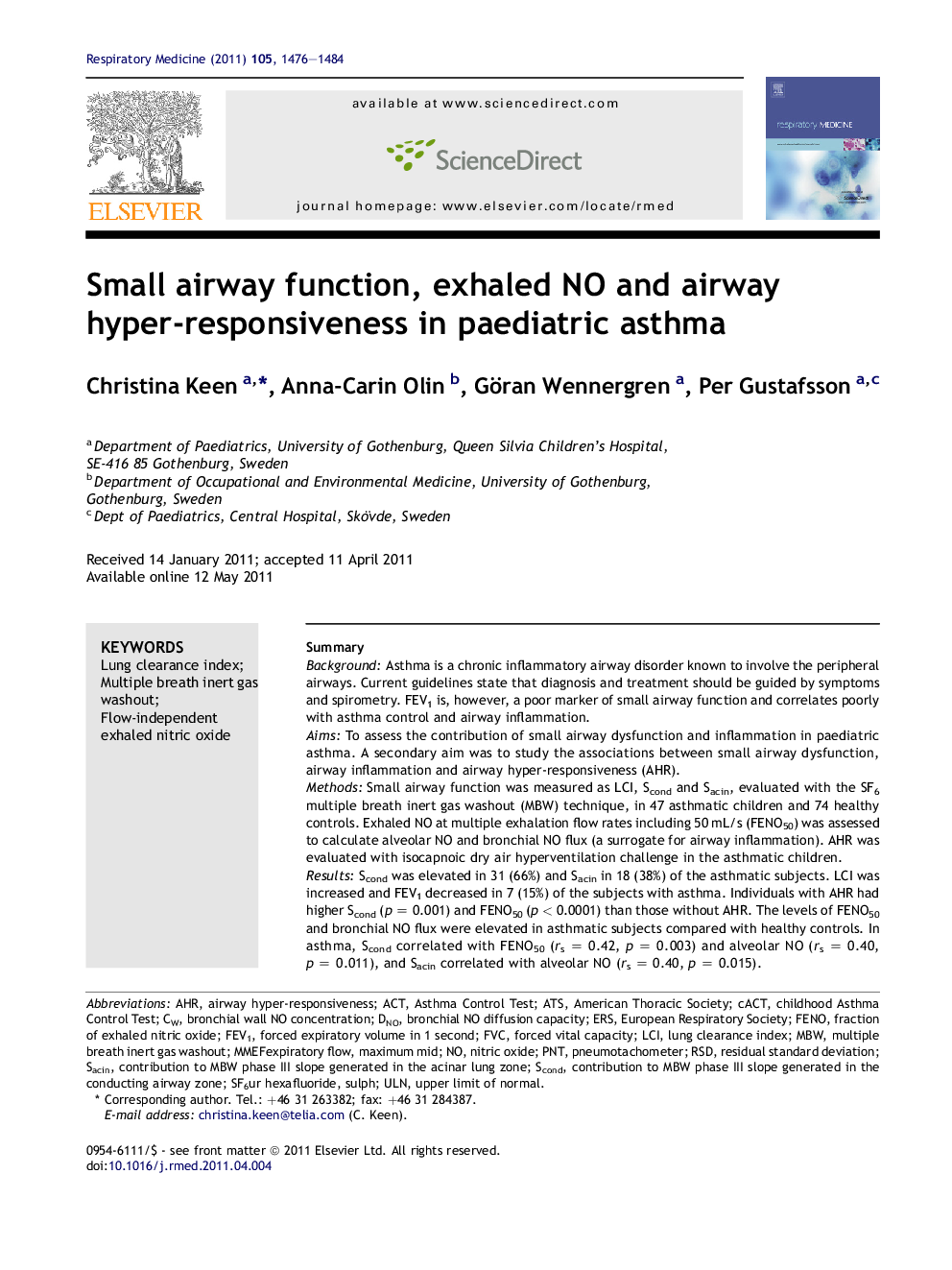| Article ID | Journal | Published Year | Pages | File Type |
|---|---|---|---|---|
| 4210340 | Respiratory Medicine | 2011 | 9 Pages |
SummaryBackgroundAsthma is a chronic inflammatory airway disorder known to involve the peripheral airways. Current guidelines state that diagnosis and treatment should be guided by symptoms and spirometry. FEV1 is, however, a poor marker of small airway function and correlates poorly with asthma control and airway inflammation.AimsTo assess the contribution of small airway dysfunction and inflammation in paediatric asthma. A secondary aim was to study the associations between small airway dysfunction, airway inflammation and airway hyper-responsiveness (AHR).MethodsSmall airway function was measured as LCI, Scond and Sacin, evaluated with the SF6 multiple breath inert gas washout (MBW) technique, in 47 asthmatic children and 74 healthy controls. Exhaled NO at multiple exhalation flow rates including 50 mL/s (FENO50) was assessed to calculate alveolar NO and bronchial NO flux (a surrogate for airway inflammation). AHR was evaluated with isocapnoic dry air hyperventilation challenge in the asthmatic children.ResultsScond was elevated in 31 (66%) and Sacin in 18 (38%) of the asthmatic subjects. LCI was increased and FEV1 decreased in 7 (15%) of the subjects with asthma. Individuals with AHR had higher Scond (p = 0.001) and FENO50 (p < 0.0001) than those without AHR. The levels of FENO50 and bronchial NO flux were elevated in asthmatic subjects compared with healthy controls. In asthma, Scond correlated with FENO50 (rs = 0.42, p = 0.003) and alveolar NO (rs = 0.40, p = 0.011), and Sacin correlated with alveolar NO (rs = 0.40, p = 0.015).ConclusionDysfunction of small conducting airways is associated with airway inflammation and hyper-responsiveness in paediatric asthma.
